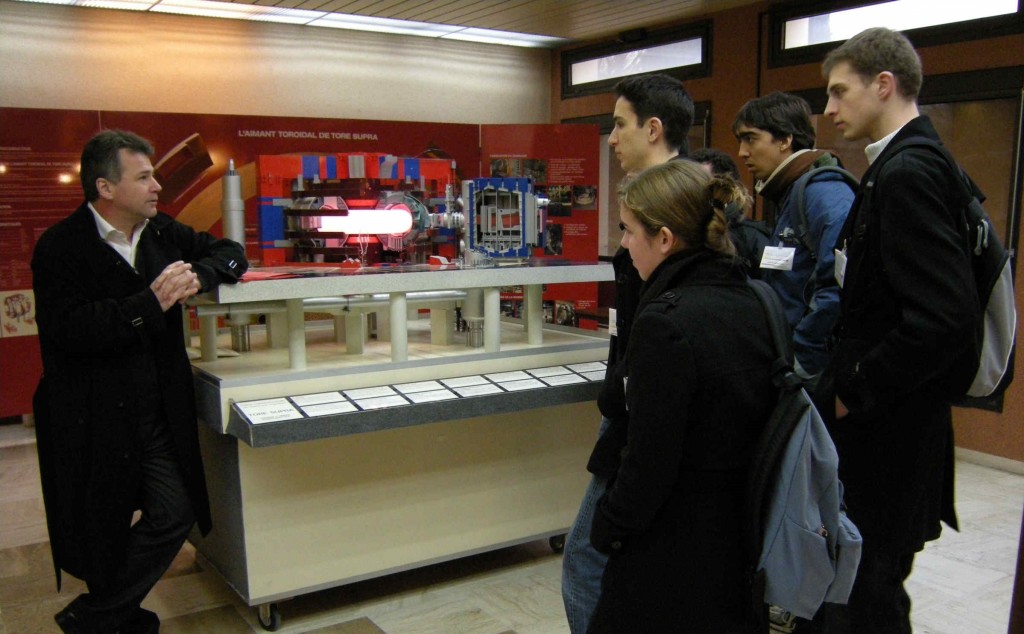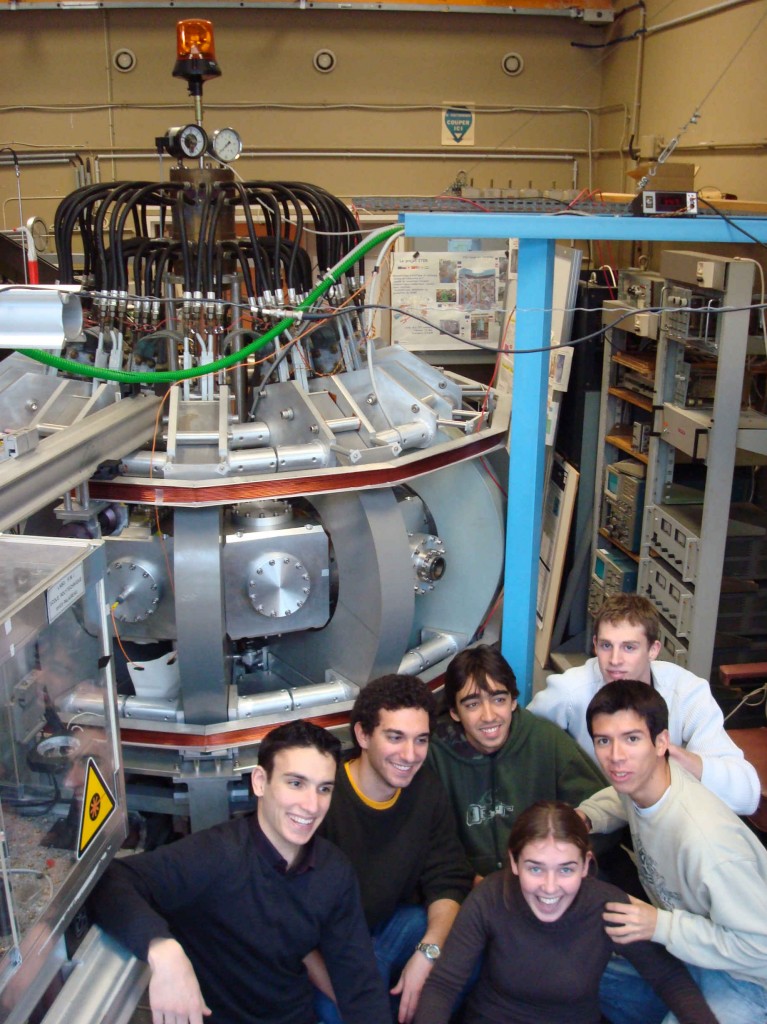ITER NEWSLINE
68
ToriX: the little tokamak that could
Robert Arnoux
ToriX: the little tokamak that could

On their recent visit to Tore Supra, Polytechnique students and their professor were welcomed and briefed by Jean-Marc Ané, Philippe Jacques Moreau and Sylvain Bremon, IRFM, CEA-Cadarache.

The ToriX "baby tokamak" and its operators: plasma (argon) volume 30 litres r=0.05; R=0.6; confinement time: one hundred microseconds; energy: some 0.5 millijoules.
While large tokamaks dominate fusion research, there is still a lot to be learned from small, even tiny machines. ToriX, with a plasma volume of 0.03 m³ (30 litres), is one of them. It was built some 15 years ago at the French École Polytechnique, one of the most prestigious scientific institutions in the country, and has been used ever since to train students in various diagnostic methods.
"We use ToriX as support, both for thesis work and for students' science projects," says Dominique Grésillon, a physicist and professor who recently led a small group of Polytechnique second-year students—or "Xs," as they are nicknamed—on a visit of the Tore Supra installations. "Some of the diagnosis methods which have been developed here are now implemented on Tore Supra. There's a place for our "baby tokamak" in support of the much bigger installations."
Taking in the size, volume, and complexity of the Tore Supra installation was a defining experience for the students. "But what impressed us most," says Alexandre Mougel, one of the visiting Polytechniciens, "is how well the people we met understood the issues we're facing with our little ToriX. We felt much honoured as they took our students' project very seriously and treated us with great consideration."
Not all the students who take part in this project will become fusion physicists. But over the past 15 years, ToriX has contributed to the training of several specialists now working at Tore Supra, teaching plasma physics, or simply spreading the word on fusion energy.
return to Newsline #68



